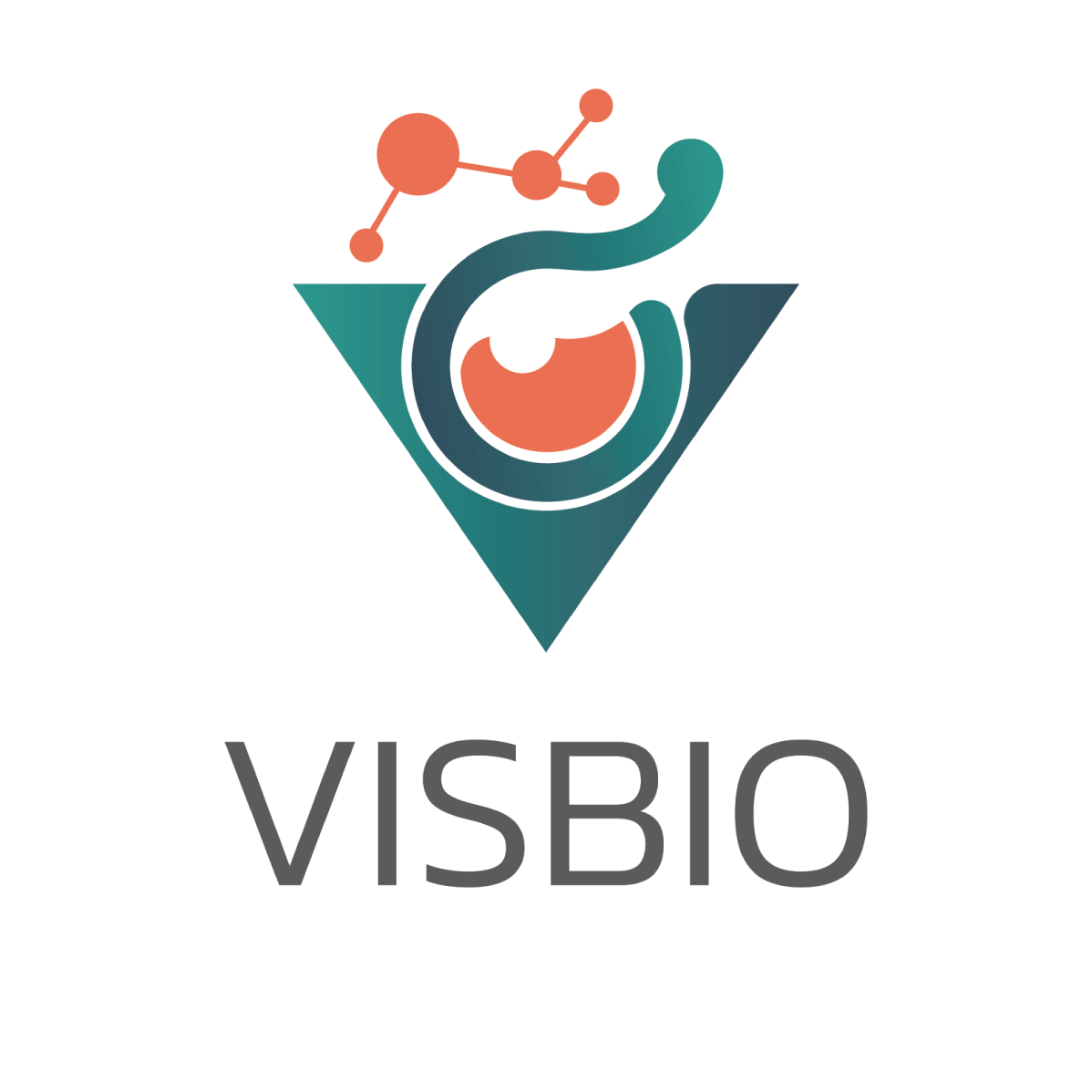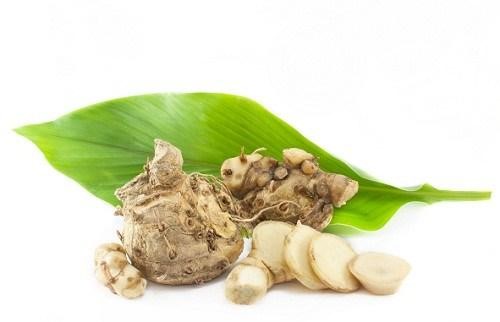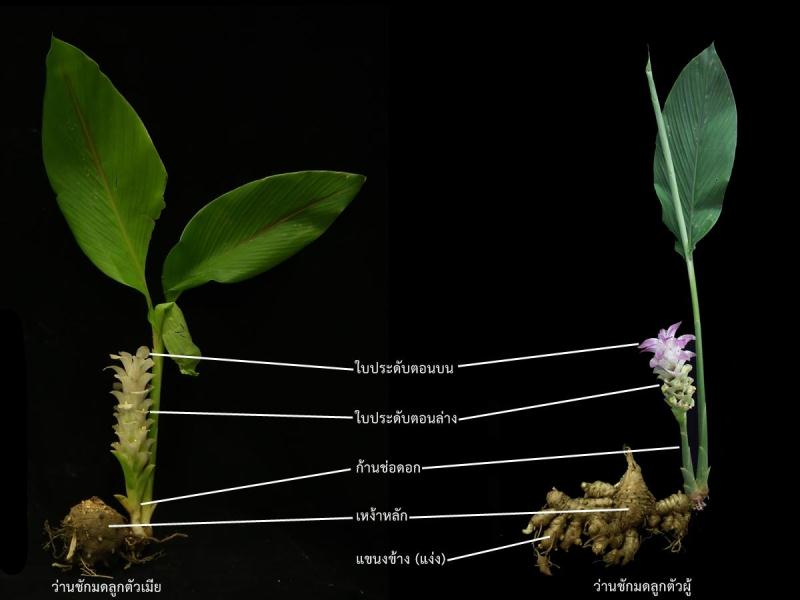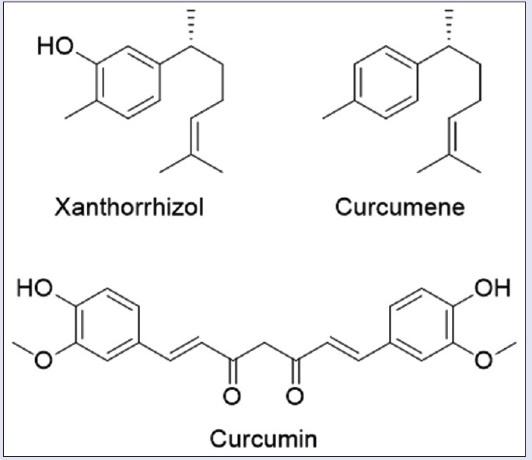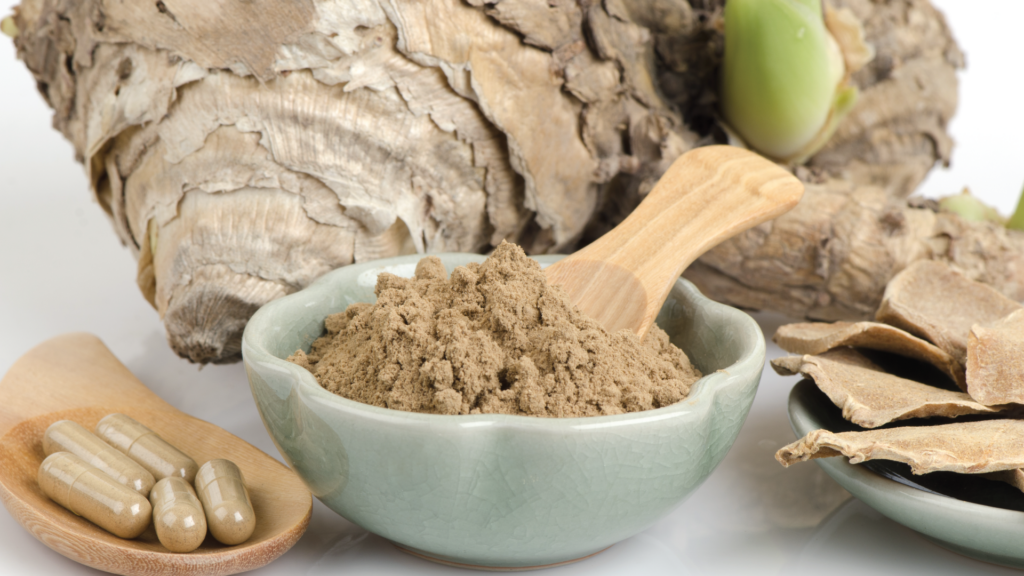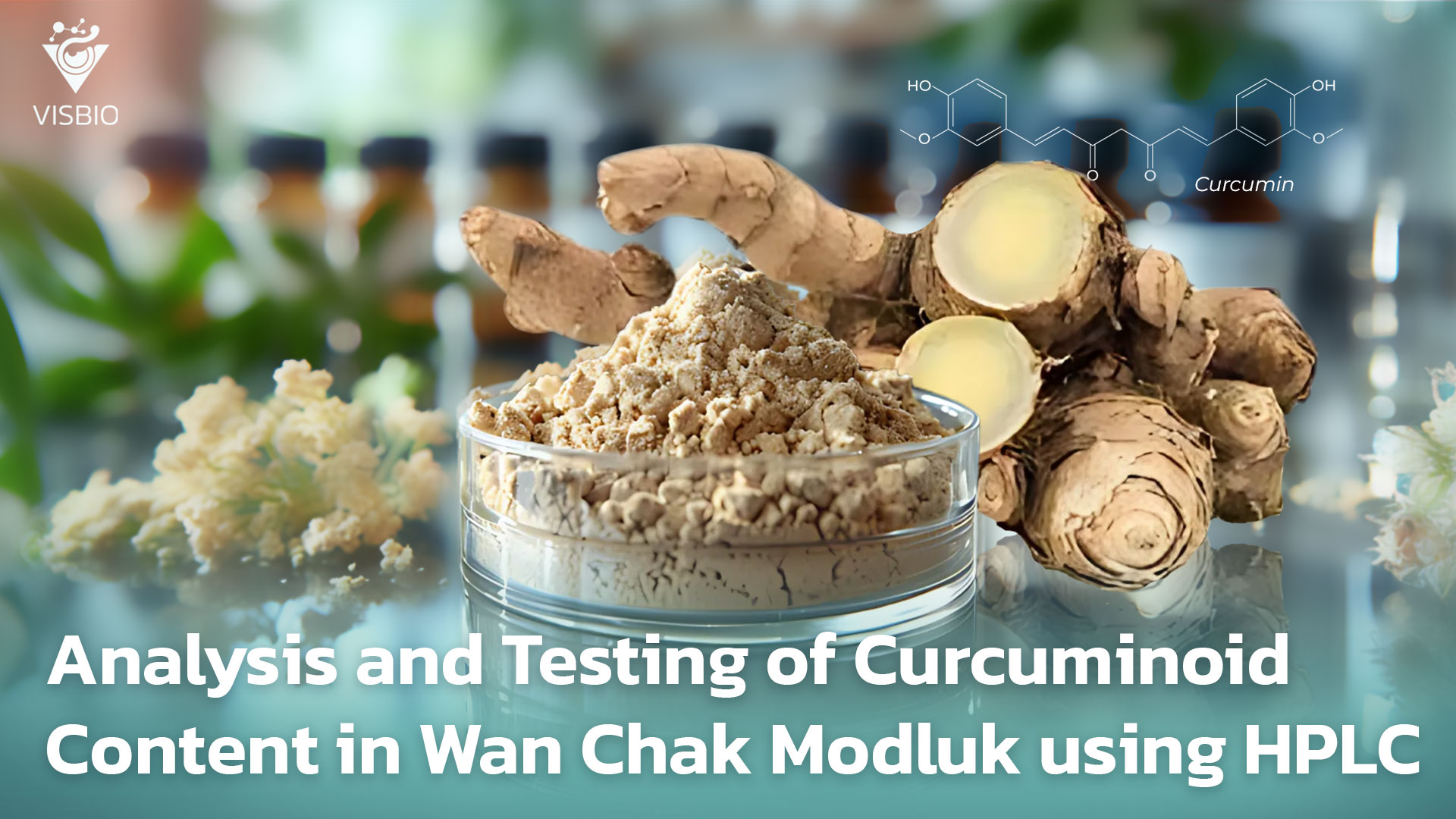
Service Information for Analysis and Testing of Curcuminoid Content in Turmeric Extracts using HPLC Technique
VISBIO provides a service for examining and analyzing the biomarker content of curcuminoids in all health and beauty industry products. Turmeric extracts found in the market are of two species: Curcuma comosa Roxb. (female turmeric), which has round-shaped underground tubers with short branches, and Curcuma latifolia Roscoe (male turmeric), which differs from the female in having oval-shaped underground tubers and longer branches.
The active components of turmeric extracts, known as curcuminoids, share similarities with ginger and galangal.
They belong to the same group as turmeric, known as Curcuminoids, which includes compounds such as Curcumin, desmethoxy curcumin, and bisdesmethoxycurcumin. These substances in turmeric extracts have properties that combat free radicals, inflammation, reduce cholesterol levels, and protect against brain degeneration.
According to traditional Thai medicinal uses, female turmeric is primarily used due to its therapeutic properties for various female conditions, including irregular menstruation, menstrual pain, and abnormal vaginal discharge. Research has shown that female turmeric exhibits effects similar to female hormones or estrogens, making it effective in treating these conditions. Additionally, studies have found that turmeric extract has anti-inflammatory properties, making it a potential ingredient for developing acne products. If acne causes inflammation, important substances in female turmeric can help alleviate the inflammation associated with acne.
Wan Chak Modluk
“Wan Chak Modluk,” AKA. Turmeric belonging to the family Zingiberaceae, is a plant with its underground stem forming a bulb. It comes in various species, but in Thailand, two main species are commonly found in the market. These are the female Vanna Chak Modluk (Curcuma comosa Roxb.), which has round rhizomes along the vertical axis with short branches, and the male Vanna Chak Modluk (Curcuma latifolia Roscoe), which differs from the female in having more rounded rhizomes and longer branches. Sometimes, distinguishing them can be challenging, as they can appear quite similar when compared side by side.
Wan Chak Modluk is often cultivated in Loei and Phetchabun provinces. According to Thai traditional medicine, the female Vanna Chak Modluk is primarily used for its therapeutic properties, especially for various conditions affecting women, such as irregular menstruation, menstrual pain, and vaginal discharge. Research has found that Vanna Chak Modluk possesses properties similar to female hormones or estrogen, and the female species is particularly effective due to the presence of active compounds called diarylheptanoids.
The active compounds in Wan Chak Modluk belong to the same family as ginger and galangal, known as
Curcuminoids. These include Curcumin, desmethoxy curcumin, and bisdesmethoxycurcumin. These compounds in Vanna Chak Modluk have antioxidant, anti-inflammatory properties, lower cholesterol levels, and protect against cognitive decline. Additionally, there are compounds belonging to the sesquiterpene family, such as Xanthorrhizol (XNT), found in the aromatic oil of the rhizomes of Curcuma xanthorrhiza Roxb.
Wan Chuck Mod Luk Extract in the Cosmetic Industry
Cosmetic products, aimed at enhancing beauty and personal care, have not been widely using Wan Chuck Mod Luk extract in their development. This is because the properties of this extract focus on internal body nourishment, particularly for products designed for women’s beauty, such as dietary supplements or female medications. However, when examining the key components of Wan Chuck Mod Luk extract, various properties can be found, such as anti-inflammatory effects. These properties can be further utilized in the development of products in the acne treatment category, as the extract can help alleviate acne inflammation.
Wan Chuck Mod Luk Extract in the Supplement Industry
Wan Chuck Mod Luk herbal extract, according to the Thai traditional medicine, is primarily derived from the female Wan Chuck Mod Luk plant because it possesses therapeutic benefits for various women’s conditions. This includes irregular menstruation or menstrual cramps, as the female Wan Chuck Mod Luk plant is particularly effective due to the presence of compounds called Diarylheptanoids, which exhibit similar properties to estrogen hormones. The medical community recognizes the efficacy of compounds similar to Phytoestrogens in treating various health conditions in menopausal women.
Due to its benefits in treating menopausal symptoms and premenstrual syndrome in women, Wan Chuck Mod Luk is commonly used as an ingredient in dietary supplements targeting women of advanced age or aged 45 and above, who often experience these symptoms. Presently, Wan Chuck Mod Luk is frequently used in the form of liquid extract, capsules, or powder in the production of dietary supplements.
Research and Development of Wan Chuck Mod Luk Extract for Health and Beauty Products
Wan Chuck Mod Luk, combined with other popular ingredients, proves useful in treating menopausal symptoms and premenstrual syndrome in women. Therefore, supplement manufacturers often include Wan Chuck Mod Luk as an ingredient in women’s dietary supplements, emphasizing its outstanding nourishing properties for women’s well-being. Moreover, it is a well-accepted and affordable herbal plant cultivated in the country since ancient times up to the present. However, excessive consumption beyond necessary levels may have adverse effects on the body.
Example of Curcuminoid Report for Wan Chuck Mod Luk Extract Using HPLC
The figure shows an HPLC chromatogram of Wan Chuck Mod Luk extract. 1 represents the sample of Wan Chuck
Mod Luk extract, 2 shows the standard curcuminoids at a concentration of 5 µg/mL, consisting of bisdemethoxycurcumin, demethoxycurcumin, and curcumin, and 3 represents a 85 µg/mL concentration of xanthorrhizol compound.
Literature:
- European Medicines Agency, 2013. Reproduction is authorised provided the source is acknowledged. “Assessment report on Curcuma xanthorrhiza Roxb. (C. xanthorrhiza D. Dietrich)., rhizome” 14 May 2013 EMA/HMPC/604598/2012 Committee on Herbal Medicinal Products (HMPC), United Kingdom
- Nurul Afifah Mohd Salleh, Sabariah Ismail, and Mohd Rohaimi Ab Halim “ Effects of Curcuma xanthorrhiza Extracts and Their Constituents on Phase II Drug-metabolizing Enzymes Activity” Pharmacognosy Res. 2016 Oct-Dec; 8(4): 309–315. doi: 10.4103/0974-8490.188873
- ระวิวรรณ แก้วอมตวงศ์. “Secondary Metabolites and Biological Activities of Wan Chak Mod Look Distributed in ThaiMarkets.” วารสารวิทยาศาสตร์และเทคโนโลยี มหาวิทยาลัยอุบลราชธานี ปีที่ 19ฉบับที่ 1มกราคม–เมษายน2560
- นาฐยา ปิติวิทยากุล, ปภาวรินทร์ วจีสิงห์, ฐิติยาภรณ์ ประสมทรัพย, “Study of acetylcholinesterase inhibitor and antioxidant activities from Curcuma zedoaria Roscoe. and Curcuma comosa Roxb.”
- รองศาสตราจารย์ พร้อมจิต ศรลัมพ์. “ว่านชักมดลูก” สำนักงานข้อมูลสมุนไพร คณะเภสัชศาสตร์ มหาวิทยาลัยมหิดล pharmacy.mahidol.ac.th/th/knowledge/article/92/ว่านชักมดลูก/
- กนกพร อะทะวงษา “ว่านชักมดลูก…สมุนไพรวัยทอง” สำานักงานข้อมูลสมุนไพร คณะเภสัชศาสตร์ มหาวิทยาลัยมหิดล
- นราภรณ์ ฐานะโชติพันธ์. ว่านชักมดลูก. จุลสารข้อมูลสมุนไพร คณะเภสัชศาสตร์ มหาวิทยาลัยมหิดล. 2545;19(3):5-16
- Pensri Penprapai, Thitikorn Chanwun “Study of Antimicrobial and Anti-tyrosinase in Coconut Oil with Extracted Curcuma Species for Obtain Basic Information for Using in Cosmetics” มหาวิทยาลัยเทคโนโลยีราชมงคลศรีวิชัย
- ระววรรณ แกวอมตวงศ, “Secondary Metabolites and Biological Activities of Wan Chak Mod Look Distributed in Thai Markets” กลุ่มวิชาเภสัชเคมีและเทคโนโลยีเภสัชกรรม คณะเภสัชศาสตร์, วารสารวิทยาศาสตร์และเทคโนโลยี มหาวิทยาลัยอุบลราชธานี ปีที่ 19 ฉบับที่ 1 มกราคม – เมษายน 2560
- Epi Erpina, Mohamad Rafi, Latifah Kosim Darusman and Arum Vitasari, 2017, Simultaneous Quantification of Curcuminoids and Xanthorrhizol in Curcuma Xanthorrhiza by High-Performance Liquid Chromatography, Journal of Liquid Chromatography & Related Technologies 40(12).
